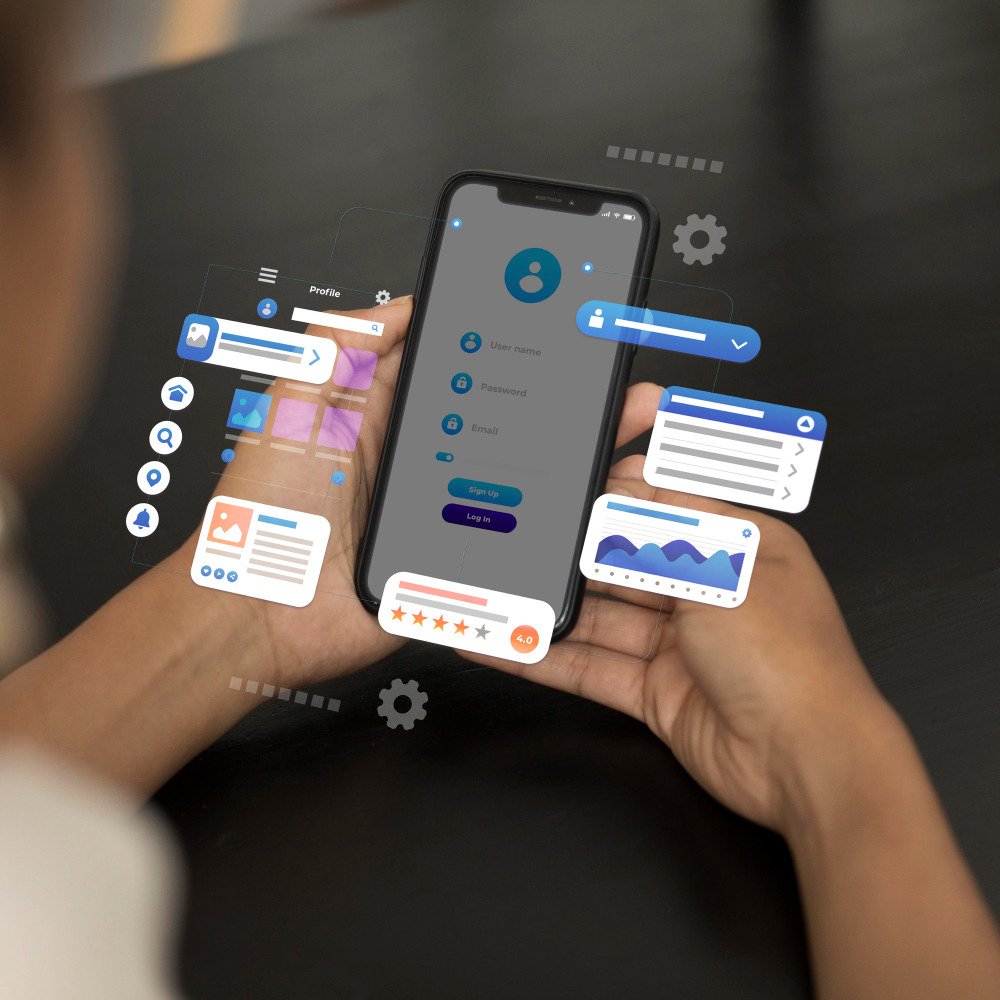The Future of Mobile App Development: Trends to Watch in 2024
Mobile app development continues to evolve rapidly, driven by technological advancements and shifting user expectations.

Mobile app development continues to evolve rapidly, driven by technological advancements and shifting user expectations. As we move into 2024, understanding the future trends in mobile app development can provide valuable insights for businesses, developers, and tech enthusiasts alike. This blog explores the key trends shaping the mobile app landscape in 2024 and how they will impact the industry.
1. Artificial Intelligence and Machine Learning
Artificial Intelligence (AI) and Machine Learning (ML) are no longer futuristic concepts but integral components of mobile app development. In 2024, we can expect AI and ML to play even more significant roles in enhancing user experiences and app functionalities.
a. Personalized User Experiences: AI algorithms analyze user data to provide personalized content, recommendations, and experiences. Apps will increasingly use AI to tailor experiences based on individual preferences and behaviors, making interactions more relevant and engaging.
b. Enhanced Customer Support: AI-powered chatbots and virtual assistants will become more sophisticated, offering real-time support and resolving issues with greater accuracy. This improves user satisfaction and reduces the need for human intervention.
c. Predictive Analytics: ML algorithms can predict user behavior and trends, allowing developers to create apps that anticipate user needs and preferences. This predictive capability can lead to more effective marketing strategies and feature enhancements.
2. 5G Technology
The rollout of 5G technology is set to revolutionize mobile app development by providing faster data speeds, lower latency, and more reliable connections. In 2024, the impact of 5G on mobile apps will be profound.
a. Real-Time Applications: 5G enables seamless real-time applications such as video streaming, augmented reality (AR), and virtual reality (VR). Apps that require high-speed data transmission, like live streaming platforms and multiplayer games, will benefit significantly from 5G.
b. Enhanced User Experiences: With reduced latency and faster download speeds, users will experience smoother and more responsive interactions. This will lead to higher user satisfaction and retention rates.
c. IoT Integration: 5G will facilitate better integration with the Internet of Things (IoT), allowing apps to communicate with a vast array of connected devices. This opens up opportunities for innovative app functionalities in smart homes, healthcare, and other sectors.
3. Augmented Reality (AR) and Virtual Reality (VR)
AR and VR technologies have been steadily advancing, and 2024 will see them become more prevalent in mobile app development. These immersive technologies offer unique ways to engage users and provide new experiences.
a. Immersive Experiences: AR and VR will enhance mobile apps by creating immersive environments and interactive elements. For example, AR can overlay digital information onto the real world, while VR can transport users to entirely virtual spaces.
b. Enhanced Shopping Experiences: AR will revolutionize e-commerce by allowing users to visualize products in their real-world environment before making a purchase. This can improve customer satisfaction and reduce return rates.
c. Training and Education: VR apps will provide interactive training and educational experiences, offering users hands-on learning opportunities that are both engaging and effective.
4. Cross-Platform Development
Cross-platform development frameworks allow developers to create apps that run on multiple operating systems from a single codebase. In 2024, this approach will continue to gain traction due to its efficiency and cost-effectiveness.
a. Frameworks like Flutter and React Native: Tools such as Flutter and React Native enable developers to build high-quality, native-like apps for both iOS and Android platforms using a single codebase. This reduces development time and costs while maintaining performance and user experience.
b. Increased Adoption: As more businesses seek to reach users across different devices and platforms, the demand for cross-platform solutions will grow. This trend will drive further innovation in cross-platform development tools and practices.
c. Simplified Maintenance: Maintaining and updating apps across multiple platforms can be challenging. Cross-platform frameworks simplify this process by allowing developers to make changes once and deploy them across all supported platforms.
5. Privacy and Security
With increasing concerns about data privacy and security, mobile app developers will need to prioritize these aspects in 2024. Users are becoming more aware of their data rights, and regulatory requirements are tightening.
a. Enhanced Data Protection: Developers will need to implement robust security measures to protect user data. This includes encrypting sensitive information, using secure authentication methods, and regularly updating security protocols.
b. Compliance with Regulations: Regulations such as GDPR (General Data Protection Regulation) and CCPA (California Consumer Privacy Act) will continue to influence mobile app development. Developers must ensure that their apps comply with these regulations to avoid legal issues and build trust with users.
c. Transparency and Consent: Apps will need to provide clear information about data collection and usage, allowing users to make informed decisions about their data. This transparency will help build user trust and improve overall satisfaction.
6. Blockchain Technology
Blockchain technology is gaining traction in various industries, and its applications in mobile app development are becoming more evident. In 2024, blockchain will offer new possibilities for enhancing app security, transparency, and functionality.
a. Secure Transactions: Blockchain can provide a secure and transparent way to handle transactions within mobile apps, such as payments and in-app purchases. This can reduce fraud and increase user confidence.
b. Decentralized Apps (DApps): DApps, which run on decentralized networks, will become more popular. These apps offer greater security, reliability, and resistance to censorship compared to traditional apps.
c. Smart Contracts: Blockchain-based smart contracts can automate and enforce agreements within mobile apps, reducing the need for intermediaries and ensuring that terms are met.
7. Voice Technology
Voice technology is becoming increasingly integrated into mobile apps, offering new ways for users to interact with their devices. In 2024, voice technology will continue to evolve and expand.
a. Voice-Activated Features: Voice commands and interactions will become more sophisticated, allowing users to control apps and perform tasks using natural language. This can enhance accessibility and convenience.
b. Voice Search and Navigation: Voice search and navigation will become more accurate and intuitive, improving the user experience and making it easier to find information within apps.
c. Integration with Virtual Assistants: Apps will increasingly integrate with virtual assistants like Siri, Google Assistant, and Alexa, allowing users to interact with apps through voice commands and receive personalized responses.
8. Wearable Technology Integration
Wearable technology, such as smartwatches and fitness trackers, is becoming more prevalent, and mobile apps are increasingly incorporating features to interact with these devices.
a. Health and Fitness Apps: Wearable devices will continue to play a significant role in health and fitness apps, providing real-time data on physical activity, heart rate, and other health metrics.
b. Seamless Synchronization: Mobile apps will offer better integration with wearables, allowing users to sync data effortlessly and access comprehensive insights across devices.
c. New Use Cases: As wearable technology evolves, new use cases and applications will emerge, offering innovative ways to interact with and utilize wearable devices.
9. Edge Computing
Edge computing involves processing data closer to the source, rather than relying on centralized cloud servers. This approach will impact mobile app development by improving performance and reducing latency.
a. Faster Data Processing: Edge computing enables faster data processing by performing computations closer to the user’s device. This can lead to quicker response times and improved app performance.
b. Enhanced Offline Capabilities: With edge computing, apps can function more effectively even with limited or intermittent connectivity, providing a better user experience in challenging network conditions.
c. Increased Efficiency: Edge computing reduces the load on centralized servers and networks, leading to more efficient data handling and reduced operational costs.
10. Sustainable Development Practices
As environmental concerns continue to grow, sustainable development practices will become increasingly important in mobile app development. In 2024, there will be a greater emphasis on creating eco-friendly apps.
a. Energy-Efficient Design: Developers will focus on optimizing app performance to reduce energy consumption, contributing to a lower carbon footprint and extending device battery life.
b. Green Data Centers: The choice of hosting providers will consider their commitment to sustainability, with a preference for data centers powered by renewable energy sources.
c. Responsible Resource Usage: Sustainable development practices will include minimizing resource usage during app development and ensuring that apps are optimized for efficiency.
Conclusion
The future of mobile app development is shaped by rapid technological advancements and evolving user expectations. As we enter 2024, trends such as AI and ML, 5G technology, AR and VR, cross-platform development, privacy and security, blockchain technology, voice technology, wearable integration, edge computing, and sustainable practices will play pivotal roles in driving innovation and enhancing user experiences.
For businesses and developers, staying abreast of these trends is crucial to staying competitive and delivering apps that meet the needs of modern users. By embracing these trends and incorporating them into their strategies, stakeholders can ensure that their mobile apps are not only cutting-edge but also aligned with the future of technology.
As technology continues to advance, the landscape of mobile app development will evolve, offering new opportunities and challenges. Keeping an eye on these trends will help you navigate the ever-changing mobile app ecosystem and make informed decisions for the future.


 teknikoglobal
teknikoglobal 









